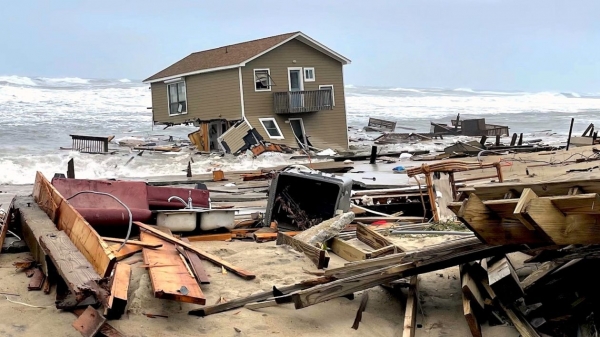Rounding the corner near the village of Rodanthe, there is a stretch of highway known as the S-Curves because of its twisting loops and turns. It is, by almost any measure, one of the most vulnerable sections of roadway in North Carolina, if not the nation. Years ago, highway officials erected a massive dike here with 2,200 sandbags — each bag was 15 feet long, two feet tall, and five feet wide — and then buried the dike in even more sand in an effort to keep the ocean at bay and the highway, known as NC 12, open.
It didn’t work, or at least it didn’t work as hoped. The Atlantic Ocean continued to pummel the towering artificial dune, crashing over the top, tearing apart sandbags, and flooding the highway — closing the only access on and off of the lower Outer Banks for days and sometimes weeks.
Following each storm, the North Carolina Department of Transportation (DOT) sent in bulldozers and graders to rebuild the sand dike and patch the road, only to watch the next storm undo its work. “It’s like the Siege of Troy,” said local biologist Mike Bryant. “It just goes on and on.”
Read more at: Yale Environment 360
A house in Rodanthe, North Carolina that collapsed into the ocean during a storm, May 2022. (Photo Credit: CAPE HATTERAS NATIONAL SEASHORE)


